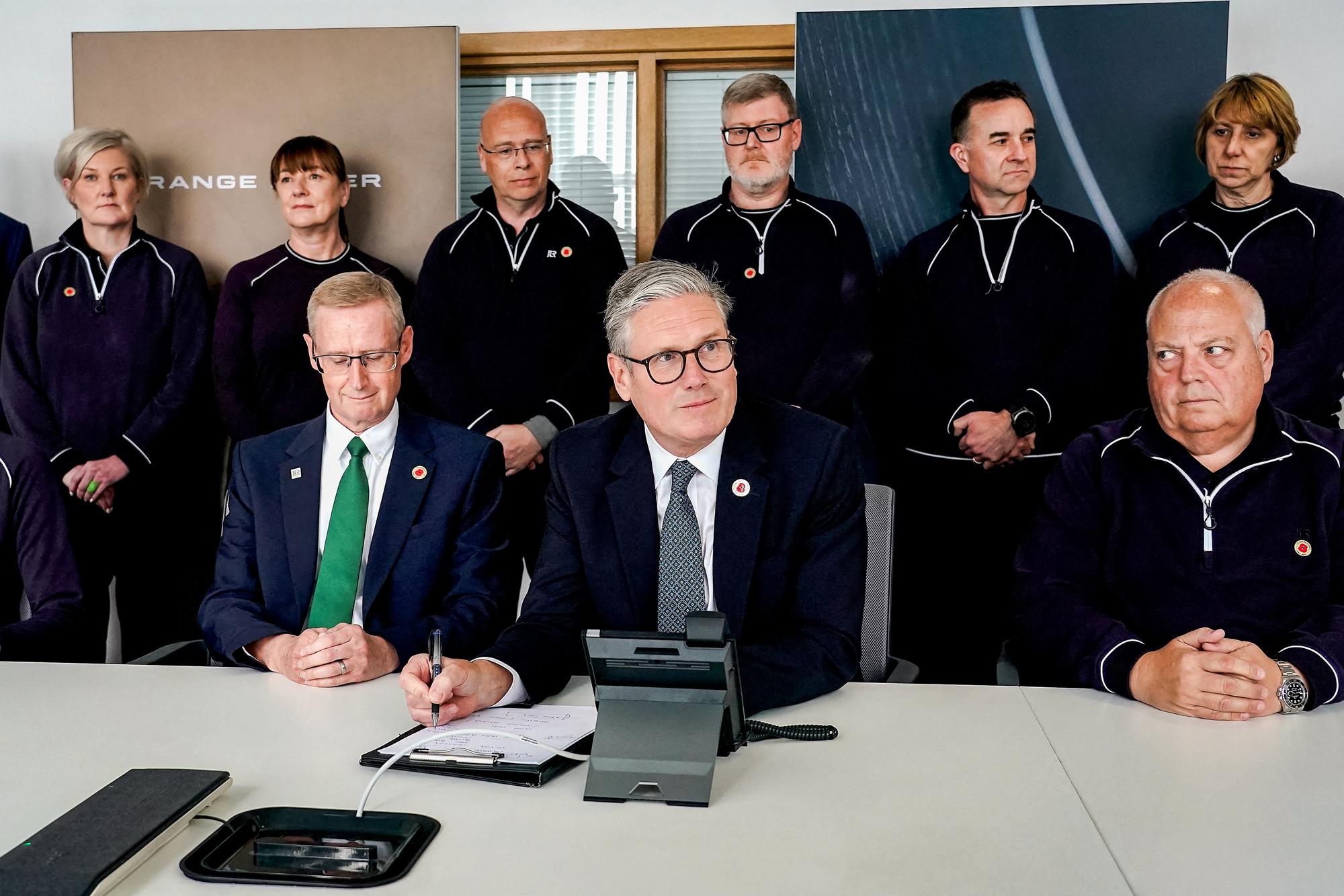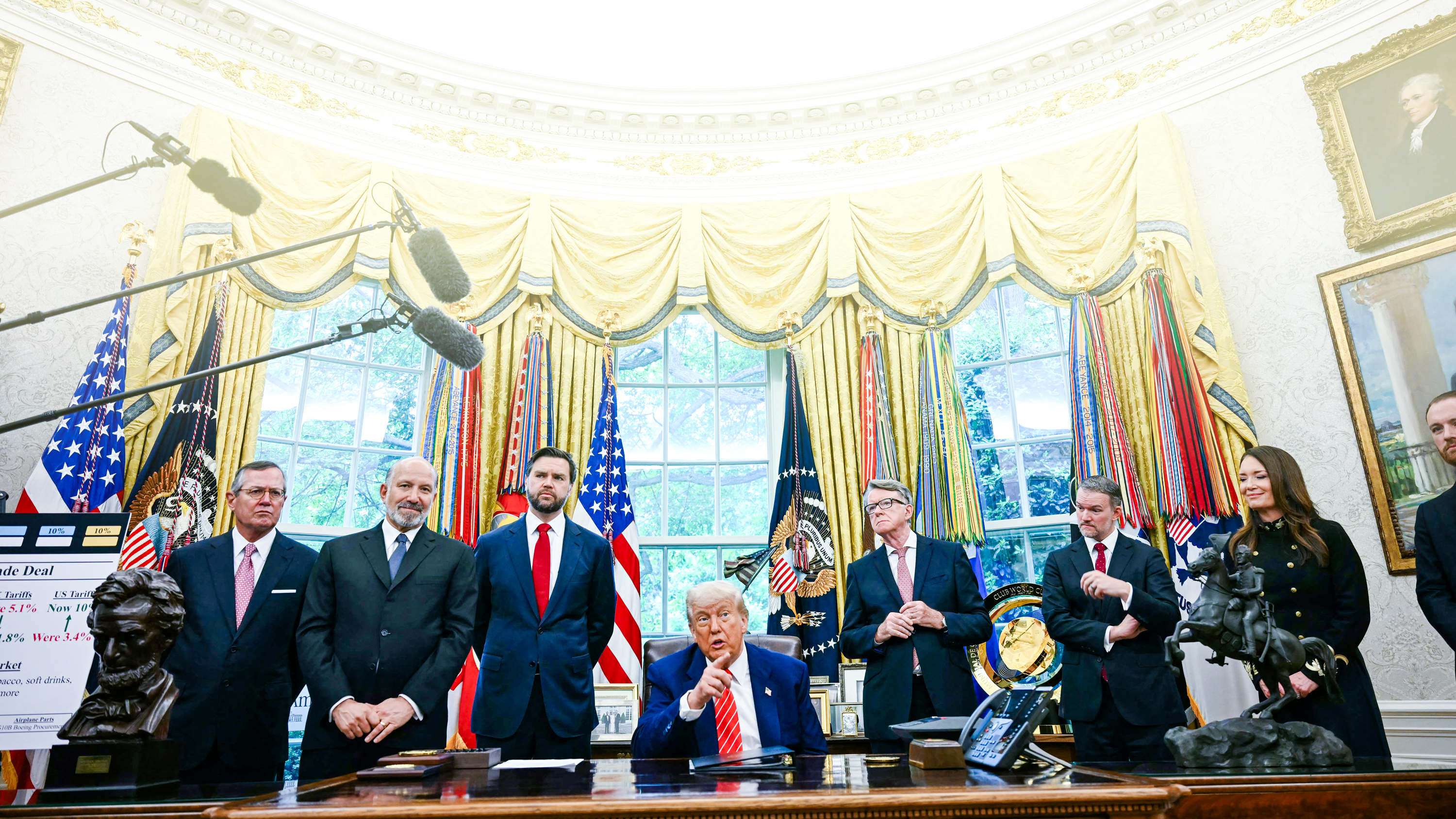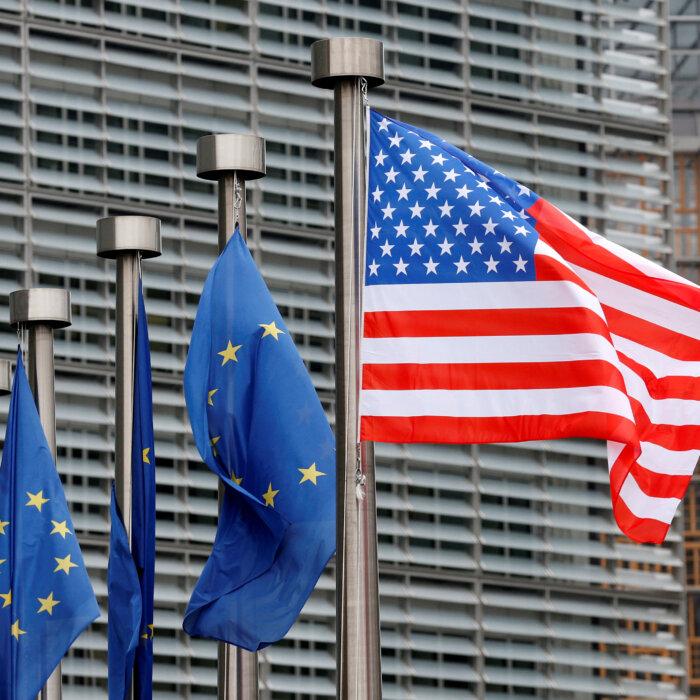President Donald Trump and British Prime Minister Keir Starmer on May 8 unveiled the broad outline of a new trade agreement hailed by Trump as a “great deal for both countries.”
It was the first trade deal announced after Trump imposed sweeping tariffs on nearly all countries on April 2.
“This is a really fantastic, historic day,“ Starmer said by phone during the announcement. ”This is going to boost trade between and across our countries.”
While nothing was signed to make the arrangement official, Trump told reporters at the Oval Office that a finalized version will be released “in the coming weeks.”
Tariffs and Quotas
The United States will keep its baseline universal 10 percent tariff on UK goods entering the country.However, the British government confirmed that the trade pact will involve various levy reductions on UK exports to the United States.
Twenty-five percent tariffs implemented on British steel will be lowered to zero percent, and tariffs on some UK-made automobiles will be reduced from 27.5 percent to 10 percent.
Once a deal is finalized, U.S. officials will work on an alternative agreement for the Section 232 tariffs on British-made vehicles.
Under this arrangement, British automakers will be provided a quota of 100,000 cars per year shipped to the U.S. market at the lower tariff rate.
Any vehicle that exceeds the quota would be subjected to a 25 percent levy.
Commerce Secretary Howard Lutnick said British companies can export plane parts to the United States tariff-free.
In exchange for this concession, a British airline will purchase $10 billion worth of Boeing airplanes.

On the agriculture front, the new deal could potentially expand market access in the world’s sixth-largest economy by an estimated $5 billion.
According to the White House, this will include $700 million in ethanol exports and $250 million in agricultural products, such as beef.
Britain will eliminate tariffs on U.S. ethanol, an ingredient used to manufacture beer.
Farmers on both sides of the Atlantic will be given “reciprocal market access on beef.”
“Specific to the beef—this is going to exponentially increase our beef exports,” Agriculture Secretary Brooke Rollins said at the event.
“And to be very clear, American beef is the safest, the best quality, and the crown jewel of American agriculture for the world.”
Buck Wehrbein, the National Cattlemen’s Beef Association president and a Nebraska cattleman, welcomed the announcement.
“For years, American cattle producers have seen the United Kingdom as an ideal partner for trade,” Wehbrein said in a statement.
“Between our countries’ shared history, culture, and their desire for high-quality American beef, securing a trade agreement is a natural step forward.”
British farmers will be extended a tariff-free quota for 13,000 metric tons of beef.
Speaking to reporters at a Jaguar Land Rover facility in the West Midlands, Starmer clarified that his government did not lower food standards to strike a trade deal.
“We said we had red lines on standards, particularly in agriculture. We’ve kept to those standards,” the prime minister said.
Chicken, for instance, is processed differently in the United States and the United Kingdom.
In the UK, the practice of chlorine-washing chicken is prohibited.

Non-Tariff Trade Barriers
A vital aspect of the Trump administration’s trade agenda has been dismantling other barriers as well.“The UK will reduce or eliminate numerous non-tariff barriers that unfairly discriminate against American products,” Trump said.
“This is now turning out to be, really, a great deal for both countries.”
The agreement takes other actions that will benefit U.S. exporters, such as streamlining customs procedures for U.S. exports, creating a secure supply chain for pharmaceutical goods, and establishing high-standard commitments for intellectual property, labor, and the environment.
It enhances the supply chain of U.S. aerospace manufacturers by providing preferential access to premium-quality UK aerospace components.
More to Come
The president noted that the final details are being written up in the coming weeks, adding that “the actual deal is a very conclusive one.”“We think just about everything’s been approved,” Trump said.
The U.S.–UK deal is expected to set the tone for negotiations with other trading partners, the White House said.

During the weekend of May 10–11, Treasury Secretary Scott Bessent and U.S. Trade Representative Jamieson Greer will meet with their Chinese counterparts in Switzerland to discuss trade and other economic subjects.
“I think we’re going to have a very good weekend,” the president said.
‘Every Little Bit Helps’
The U.S. stock market was pleased by the trade deal blueprint.The blue-chip Dow Jones Industrial Average rallied by about 500 points. The broader S&P 500 and the tech-driven Nasdaq Composite Index added more than 1 percent.
“Our oldest ally—or at least oldest ally that speaks our language—stepped into the trade void and helped the Trump administration get a big win today,” said Chris Zaccarelli, the CIO for Northlight Asset Management, in a note to The Epoch Times.
“A trade agreement—even if it’s an agreement in principle—is what the markets were looking to see.”
Shares of Boeing increased by more than 3 percent on the news.
U.S. Treasury yields also climbed, with the benchmark 10-year yield surging about 10 basis points to above 4.37 percent.
Market watchers say the economic effects will be modest, mainly because the two economies are already tightly integrated.

“That said, every little bit helps,” he said.
Joseph Brusuelas, the chief economist at RMS, said that “beleaguered UK industries,” such as automotives and metals, are poised to be the biggest beneficiaries.













